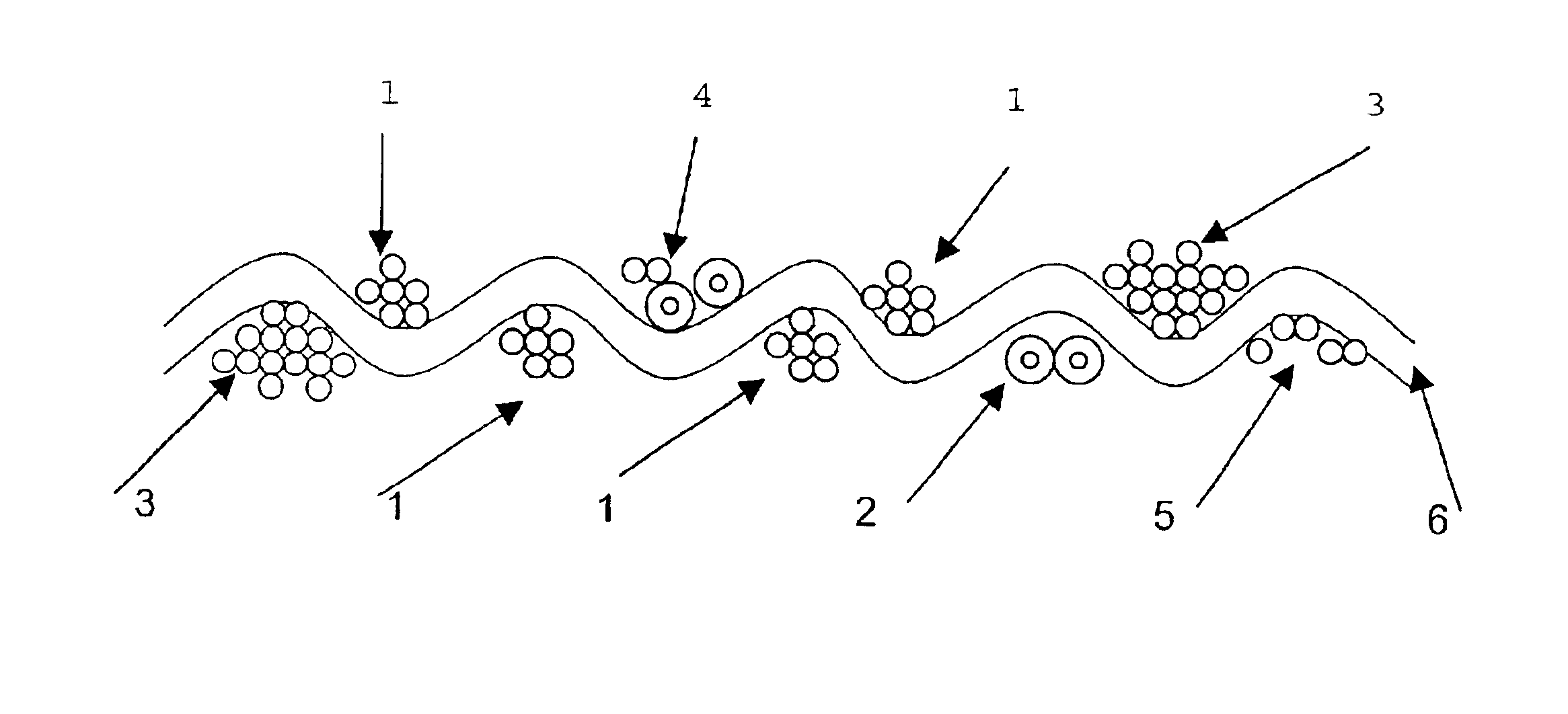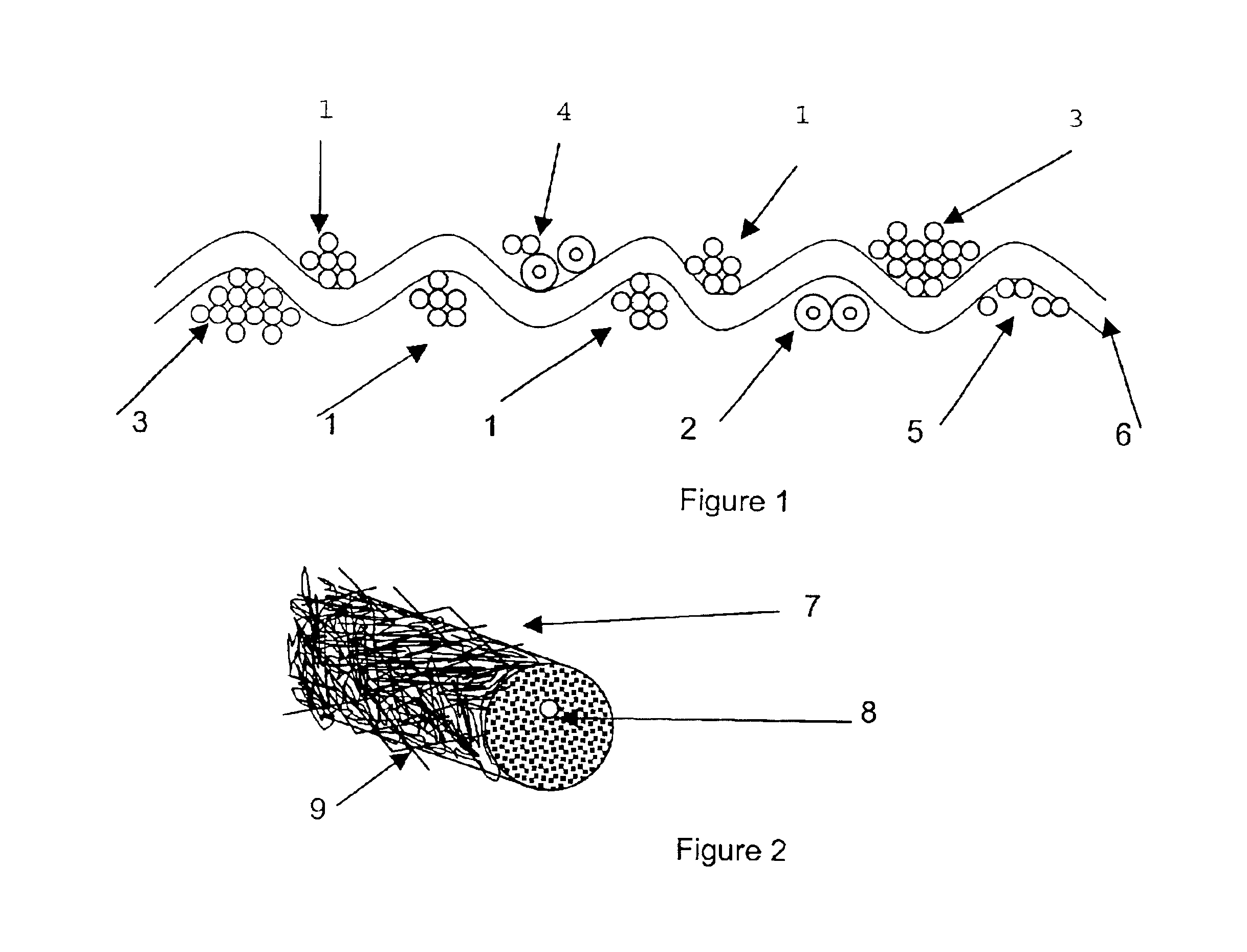Fire-retardant fabric with improved tear, cut, and abrasion resistance
a fabric and fire-retardant technology, applied in the field of turnout gear, can solve the problems of garment aesthetics (comfort and feel) problems, bare metal wire presents processing challenges, etc., and achieve the effects of greater tensile strength, greater tensile strength, and greater tensile strength
- Summary
- Abstract
- Description
- Claims
- Application Information
AI Technical Summary
Benefits of technology
Problems solved by technology
Method used
Image
Examples
example 1
A highly cut resistant and durable fabric of the present invention was prepared as follows. A body fabric yarn component was made from plied 16 / 2s staple yarns. Each staple yarn was composed of 50 weight percent PPD-T (Kevlar®) fiber as 1.5 dpf, 48 mm (1.89 inch) staple fiber from E. I. du Pont de Nemours & Co., Inc.; 40 weight percent PBI fiber as 1.5 dpf, 51 mm (2 inch) staple fiber; and 10 weight percent nylon staple fiber available as T200, 1.1 dpf and 38 mm (1.5 inch) staple fiber from E. I. du Pont de Nemours & Co., Inc. The yarns were made by blending and spinning the staple fibers into yarns via conventional cotton system processing.
A cut resistant yarn component was made from sheath core yarns where in each yarn the sheath was PPD-T / PBI / nylon staple fiber blends at 50% / 40% / 10% by weight blending ratio of the same fibers as listed above, and the core was a single 1.5 mil stainless steel wire. The PPD-T, PBI, and nylon fibers were fed through a standard carding machine used i...
example 2
Same as example 2 in fabric construction, except replacing the 2 MPD-I textured filament yarns in the ripstop component with 2 600 denier PPD-T filament yarns. This made an even higher tear resistance fabric. The test data showed that the tear strength was 3 times higher than that of a product without the ripstop component.
example 3
A fabric having a 7×2 ripstop plain weave construction was made illustrating the fabric of this invention. A plied steel reinforced PPD-T / nylon yarn having an overall cotton count of 16 / 2s and a sheath of 90 weight percent PPD-T and 10 weight percent nylon and a 1.5 mil stainless steel wire core was made for use in the cut resistant yarn component (CRYC). Two of these yarns became the cut resistant yarn component for this fabric. The ripstop yarn component (RYC) was combined yarn made from two yarns of textured 600 denier PPD-T continuous filament. A body fabric yarn having an overall cotton count of 16 / 2, was made bye plying two PPD-T / PBI blended staple yarns, the PPD-T being 60 weight percent of the blend and the remainder being PBI. Two of these plied body fabric yarns became the body fabric yarn component (BFYC).
The 7×2 ripstop fabric was constructed by weaving in the warp and fill yarn components in the following order, 7 refers to the number of yarn components between each rip...
PUM
| Property | Measurement | Unit |
|---|---|---|
| weight percent | aaaaa | aaaaa |
| weight percent | aaaaa | aaaaa |
| diameter | aaaaa | aaaaa |
Abstract
Description
Claims
Application Information
 Login to View More
Login to View More - R&D
- Intellectual Property
- Life Sciences
- Materials
- Tech Scout
- Unparalleled Data Quality
- Higher Quality Content
- 60% Fewer Hallucinations
Browse by: Latest US Patents, China's latest patents, Technical Efficacy Thesaurus, Application Domain, Technology Topic, Popular Technical Reports.
© 2025 PatSnap. All rights reserved.Legal|Privacy policy|Modern Slavery Act Transparency Statement|Sitemap|About US| Contact US: help@patsnap.com



